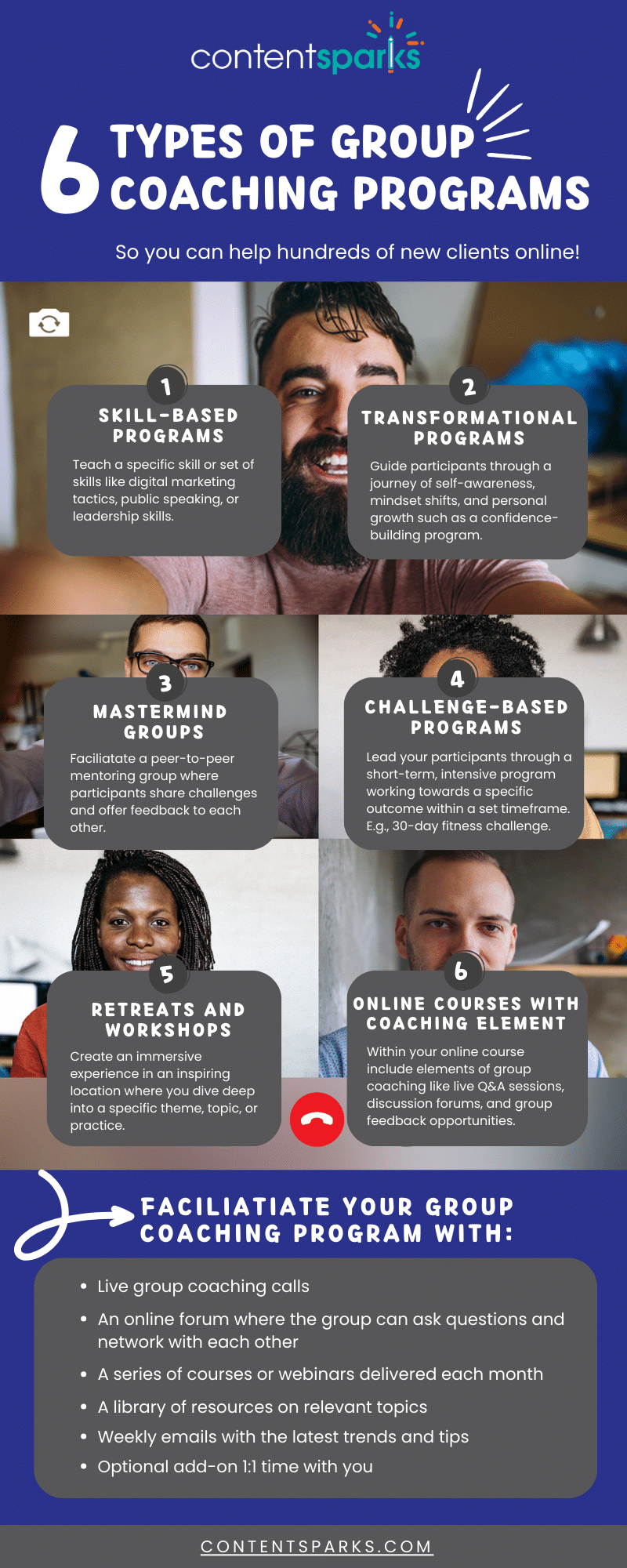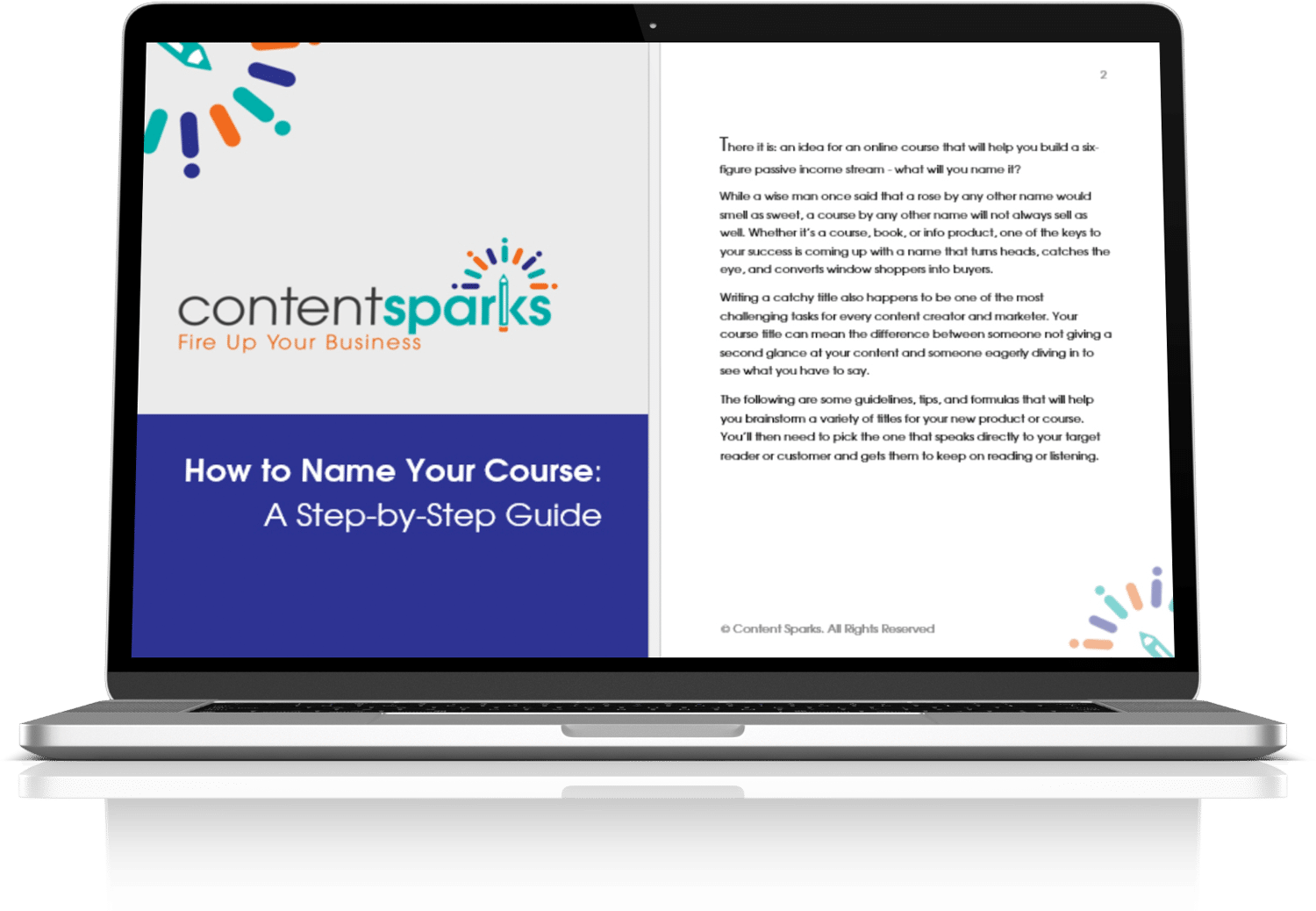Calling all coaches, consultants, and service providers: tired of trading time for money?
You’re probably well aware that there is a finite number of clients you can take on. That means you’ll eventually hit a revenue ceiling unless you can find a way to scale your services.
That’s where a group coaching program comes in. No need to fill up your entire calendar with calls or double your rates. In this guide, I’ll walk you through what a coaching program is and how to create one to propel your business to the next level. I even have a few hacks to speed things up at the end that you won’t want to miss.
What Is a Coaching Program?
A coaching program is going to be similar to the one-on-one coaching you already provide, except there is one key difference: instead of working with each client individually, you will work with them as a group.
Unlike a package of individual coaching sessions, a group program offers a defined roadmap, usually spread across multiple scheduled sessions. Your goal is to ensure that your participants not only identify their objectives but also receive your consistent support, tools, and strategies to reach them. Think of it like a hyper-focused version of the coaching you already offer, but created for a group of clients to go through at the same time, together.
Your coaching program can be tailored to the unique needs and goals of your program members. And once you get the hang of creating one coaching program, you can sell multiple ones on different topics or themes. I’ll go deeper into the “how” of creating a coaching program, so keep reading!
Why Create a Coaching Program?
A coaching program can be an excellent way to add to your business offers and grow revenue, but that’s not the only benefit.
Here are the top benefits you can expect after launching a group coaching program:
Not only does launching a group coaching program help you break out of the “time for money” cycle, but it also allows you to deliver a unique and high-impact experience for new clients. You get a stronger business and your clients see better results for their efforts.

What Types of Coaching Programs Can You Offer?
A coaching program isn't about putting a bunch of people into a room to share their problems and give advice, but you don’t have to over-complicate it either.
There are many forms your program can take in your quest to help dozens (or hundreds) of new clients online. Here are a few examples of types of group coaching programs you can consider:
No matter what type of program you offer, you can expect to include some or all of the following to help you facilitate it:
But those are just some formats you can use. Anyone can buy some software or sign up for a membership site platform. It's what you put in it that matters. Read on to learn more about how to set your coaching program up for success straight out of the gate.

How Do You Decide What Should Go into Your Group Coaching Content?
This is where great coaches distinguish themselves from mediocre ones. Your true success with any online program depends on how well you match up your members' needs with solutions.
Follow these steps to design and develop a coaching program that delivers results:
Study Your Market
Your first step is to get to know your target audience well enough to feel their pain and identify their biggest needs.
If you already have customers and clients, talk to the ones you enjoy working with and find out where they need more help. Ask them what they appreciate most from working together with you or using your current offerings.
These are the people who know your strengths best, so they'll also be able to give you insights on where you'll provide the most value to others.
If you don't already have clients, listen in on the conversations of the people you want to serve.
Check out relevant Facebook Groups, online forums, Q&A sites, YouTube videos, and anywhere else your target market goes for answers. Add to the conversation where you can provide value so you can start building your reputation right away before you even have a coaching program available.
Study the Competition
One way to make sure your group coaching program is a success is to make sure there's already a market and then identify where you can stand out.
If there isn't any competition, then it's unlikely that people are willing to pay for what you want to offer. So keep that in mind and go back to studying your market if that's the case.
Otherwise, identify your main competitors and start doing some stealthy analysis.
Look for reviews online by searching for your competitors' names. Pay attention to any comments people have made on social media about them. Analyze their offers and identify gaps based on your market research. And keep track of all of this research, since it will help you outline your program content when you get to that point.
Identify One Problem and One Solution
Your group coaching program won't sell well if you try to solve all of your market's problems. People sign up for a specific solution, and focusing on one problem will help you explain your offer more clearly.
So look through the information you've collected so far and pick one main need that your target audience has, but which your potential competitors aren't addressing well. Write down your one problem/one solution in a brief sentence that describes the transformation you'll provide with your program. For example, fill in the blanks here:
“I help [target market] go from [starting pain point or need] to [end point or goal] by [your solution]."
Here's a version I could potentially use myself:
“I help business coaches go from stressed out and struggling for revenue to being free to focus on what they want by using my time-saving, done-for-you course kits.”
This step will take some brainstorming and creativity, so test it out on people in your market before you move on.
Outline Your Program Content
Now that you know what solution you'll offer in your program, you can start designing all the elements and content.
Remember that LIVE calls with your group are a critical part of the design of a group coaching program. But, you'll need supporting materials for your members also.
Consider supporting coaching content like:
… and any other content formats you feel will help solve your group members' problems and enhance your live sessions.
Then outline the structure, timing, and delivery methods you want to use.

Group Coaching Program Outline and Planner
Request your free copy of the Group Coaching Program Outline and Planner to help you.
Finally, look at all our done-for-you content at Content Sparks to see where you can grab content that's already created and which you can edit and use in your coaching program. You'll save weeks or even months!
When you're done creating the core content for your program, come up with a catchy title and apply any branding you want. Be sure to stay consistent with the branding that you already have in place for other parts of your business.
Then pick your price point, thinking about what you learned when you did your competitor research.
Identify Your Tech
Now you'll need some technology for delivering your program. Don't let this part scare you if you're not tech-savvy. There are plenty of coaching programs and membership site platforms that make it easy for you to set up a variety of content in different ways. Some have all the features you could want in one platform so you don't need multiple services.
A few recommendations are:
I use most of those services and software, but there are many more options. Aim for simplicity wherever possible, especially if you find the tech part slowing you down.
Choose Value-Add Items
The most important part of your coaching program is the content and support you offer. However, when it comes to converting prospects to clients and building loyalty, you'll want to add some bonuses to really ‘wow' your new program members.
Examples of ‘value-add' items are:
You can also offer the option to have one-on-one coaching time with you, for an extra fee.
Outsource as Needed
Does this all seem like too much for one person to do? If you already have a full schedule, that's probably true. And if you're doing this in your spare time, it could take you months to pull it all together.
Consider outsourcing some of your coaching program elements to speed up the process or take over parts that don't fall in your skill set.
For example, have someone familiar with your chosen program platform to set it all up for you, including uploading your content. Have an email marketing expert draft some of your emails and set them up in an autoresponder series. Get a graphics pro to design your logo and images. Hire a copywriter to draft your sale page text. You don't need to do it all yourself.
And remember that you can even speed up the content creation side by using brandable, done-for-you content from Content Sparks!
With all those basics in place for creating your coaching program, you can move on to setting up your funnel for selling and delivering the program, building some buzz around it, launching it to the world, and continuing to help people over and over.
What Makes a Coaching Program Successful?
Remember, anyone can sign up for some software and launch a coaching program, so I’ll let you in on a little secret to amp up the value.
If you want your program to be a rousing success, then it's not just about ticking off objectives. It’s about ensuring your students walk away genuinely transformed. While the basics, like top-notch content and a clear roadmap, are a given, there's more you will need to consider:
If you bear these tips in mind, there is no stopping your group coaching program from being a smash hit!
Get Our Free Worksheet for Designing Your Group Coaching Program!
Need Content to Create Your Program? Buy a Done-for-You PLR Course or Coaching Program!
Check Out Our Full Range of Courses in the Shop
Teach Yourself. Then teach your audience.

When you purchase a license to any of our ready-to-go course kits, you get the rights to edit it any way you want (or leave as-is) and add your own name and branding.
Then use your new course to:
- Attract new clients and customers (such as with a free training, webinar, or eCourse)
- Add a new stream of income (such as with a paid course or workshop)
- Keep your current customers successful and coming back for more (such as with bonus webinars, videos, and other learning resources).
Enjoy!


Great post thanks for sharing this valuable information with us all. As we all know that online coaching is the hot topic at current scenario. These courses not only help people gain essential skills and help the educators reach targeted audience and share their pool of knowledge. If the course is not properly designed then you won’t be able to interact with your audience and they’ll not be able to grasp from your course and will nit get satisfied. So by opting to your strategies your readers will definitely be benefited. Nice work keep it up.